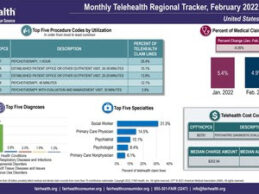Monitoring the safe and effective use of medicines has now been an essential part of public health policy for several decades. New advances in technology (e.g., ICH E2B for the electronic exchange of case reports) over the past 20 years coupled with progressive legislation have been a catalyst for an explosion in safety data over this period.
Since the World Health Organization (WHO) declared the Covid-19 pandemic in March 2020, the rate of reporting of safety data has been unprecedented
Read More
Coronavirus (COVID-19)
Health Net, MedArrive Partner to Bring In-Home COVID-19 Vaccine to At-Risk Medicaid Members
What You Should Know:
- One of California's longest-serving and most-experienced Medi-Cal partners, Health Net (a Centene plan), and virtual care and in-home health services provider MedArrive is collaborating to bring the most vulnerable, at-risk Medicaid members in-home access to COVID-19 vaccinations.
- Eligible Health Net members in the Los Angeles, Sacramento, and Fresno regions who opt into the innovative program can schedule their home visit at their
Read More
No Mask, No COVID-19 Pandemic, Right?
The end of the public transportation mask mandate, officially undone by federal Judge Kathryn Mizelle on April 18, may be recognized as the day the COVID-19 pandemic ended in America.
Except it hasn’t ended in any real sense. The virus continues to produce new variants of greater or lesser transmissibility and lethality; for now, comparatively small numbers of people continue to die of the virus daily and weekly; and the CDC continues to recommend that the elderly and immunocompromised take
Read More
Coping with Crises: Using Telemedicine to Deliver Effective Virtual Critical Care
The COVID-19 pandemic has proven that telemedicine is essential for keeping the healthcare system running during a crisis. How can virtual critical care keep improving to help providers manage future emergency events?
In early 2020, as the nation’s healthcare system almost buckled under the weight of the COVID-19 pandemic, providers searching for a way to stay connected to their patients turned to telemedicine. Primary care providers and specialists embraced virtual care, thanks to a
Read More
COVID-19 Fell Out of Top 5 Telehealth Diagnoses Nationwide in February 2022
What You Should Know:
- After two months in the top five telehealth diagnoses nationally and in every US census region, COVID-19 fell out of that ranking nationally and in every region in February 2022, according to FAIR Health's Monthly Telehealth Regional Tracker.
- The change coincided with a sharp decline in new cases of COVID-19, as reported by the Centers for Disease Control and Prevention, following the January
Read More
3 Predictions for Post-COVID Clinical Trial Decentralization
Prior to COVID, major technological transformation initiatives were already underway at many clinical trial sites, sponsors, and contract research organizations (CROs.) But the move to decentralized trials accelerated dramatically in 2020 and 2021–and it’s not slowing down.
Survey data from WCG Avoca shows that research sites and sponsors expect 89% of clinical trials to qualify as a hybrid, with a mix of decentralized technology and in-person visits.
But what will these
Read More
3 Steps to Approach & Tackle Digital Transformation in Healthcare
Artificial intelligence (AI) is predicted to save the US healthcare economy $150 billion by 2026. Replacing legacy systems and changing standard operating procedures, hospitals are moving to capitalize on technology and the ways it can change a historically hesitant to change sector. The big question is how fast teams are going to implement changes.
Healthcare leadership recently reported that their organizations are 60% through their digitalization journey. IT leaders must be leading
Read More
Salignostics Raises $8M for Rapid Saliva-Based Test Kits That Detect Pregnancy, COVID-19, Cardiac Risk, and Malaria
What You Should Know:
- Israeli startup Salignostics, the developer and provider of rapid saliva-based tests for early pregnancy detection, as well as COVID-19, cardiac risk, malaria, and other diseases, has closed an $8 million Series A funding round from private investors headed by angel investor Avigdor Orlinsky.
- The company has raised $16M to date to support development, commercialization, and marketing efforts for the tests in Israel and overseas. It will also support the launch of
Read More
Why Digital Transformation Is Imperative to Combat Healthcare’s Labor Crisis
As the coronavirus pandemic first spread across the globe, health systems turned to technology and virtual care while focusing their efforts on COVID-19 and its consequences. Physicians deployed digital tools to keep the worried well out of hospitals, to keep beds open for COVID-19 patients, and to support and manage conditions like pregnancy from the safety of patients’ homes.
Now the healthcare sector faces a new challenge. The so-called “Great Resignation” is causing workers to leave their
Read More
MLB Taps Cue Health to Expand League-Wide COVID-19 Testing Program for 2022 Season
What You Should Know:
- Cue Health Inc. (“Cue”), a healthcare technology company, and Major League Baseball (MLB) today announced a national partnership that expands Cue’s support of the league-wide COVID-19 testing program.
- Serving As MLB’s trusted at-home testing solution, Cue will provide Major League Clubs as well as the MLB league office with its integrated care platform, featuring both the portable and reusable Cue Health Monitoring
Read More










